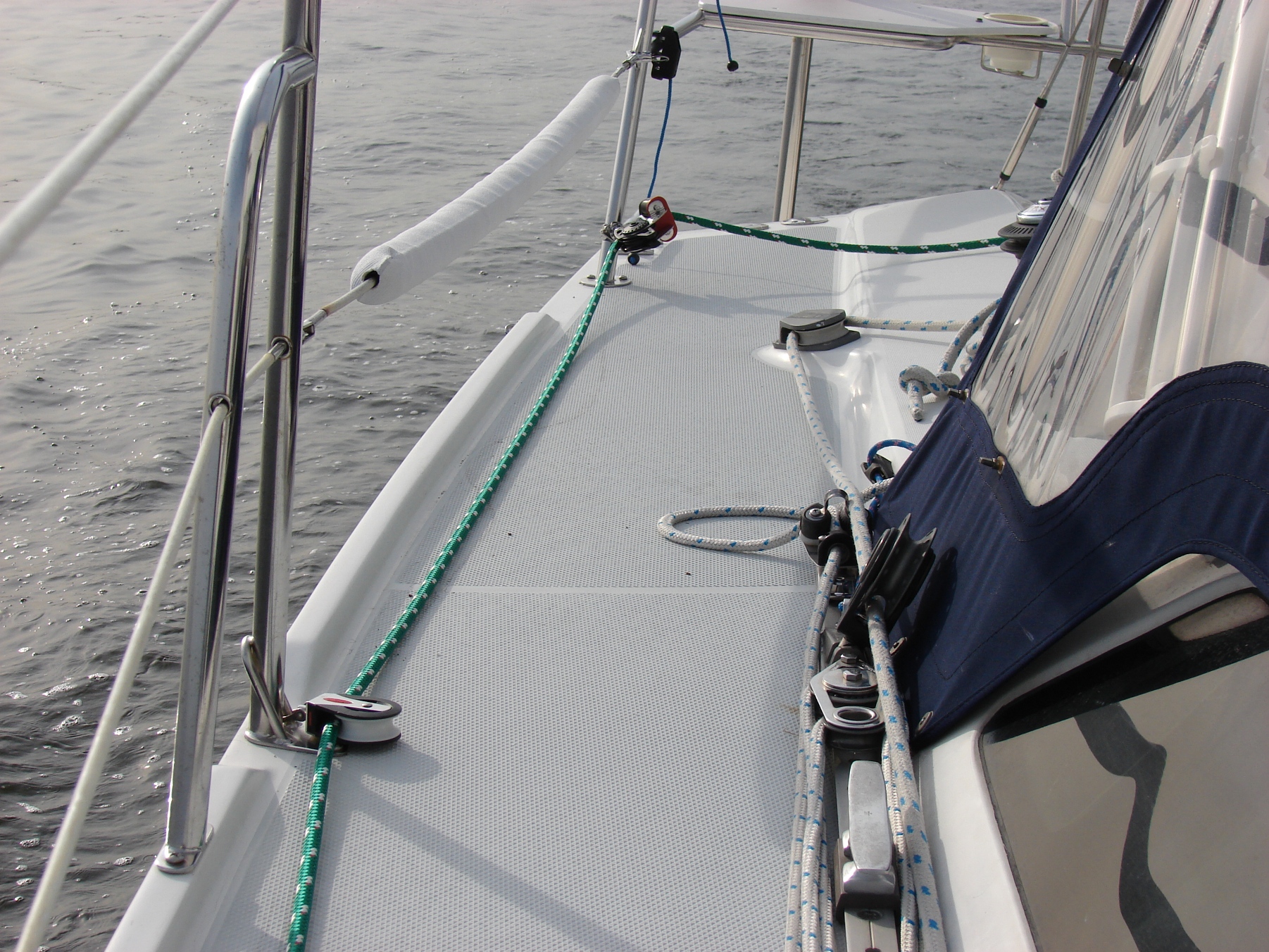Accidental Jibe Preventer - Rigging a Boom Preventer
According to Wikipedia, “A preventer, or jibe-guard, is a mechanical device on a sailing vessel which limits the boom's ability to swing dangerously across the boat during an accidental jibe. The uncontrolled jibe (or gybe) is feared by all sensible yachtsmen. The heavy boom can potentially inflict severe head injuries or dispatch crew members over board; even the mainsheet or traveler can also inflict serious injury. Uncontrolled jibes may also damage the boat itself.”
On Sea Shadow, a Catalina 320 (#808), we take the threat of the uncontrolled jibe very seriously. While I have always secured the boom to a forward deck cleat when sailing any lower than 120 degrees apparent off the wind, it was not until I had the opportunity to sail with Orlando Duran on his Catalina Morgan 44 that I learned a better way to rig a boom preventer.
The main sheet on the C320’s runs thru two blocks. On the aft most block, I hung a 3-inch shackle from the bail that the block attaches to. Picture number one shows this arrangement.
From each of the forward deck cleats, I hung 3-inch shackles and then a single block off each of them. The reason for the long shackles here is to leave room for mooring lines. Picture number two shows this arrangement. Note that the preventer lines are in the stowed versus deployed position in this picture.


Moving aft, I hung a single block on the base of each stanchion port and starboard sides for a total of 8 blocks, 4 on each side. Picture three shows this arrangement for one of the stanchions. This picture also shows a Garhauer E-Z glide genoa fairlead car, a wonderful addition for keeping one in the cockpit when the cars need to be moved.
At the base of the forward part of each side of the aft wraparound-stanchion, I attached a single block with cam cleat. Picture number 4 is a close-up of this block but it also shows in picture number 3.


Sea Shadow has two 66-foot preventer lines, one for port and one for starboard (red line for port, green for starboard). West Marine's professional rigger spliced onto the end of each preventer line Quick Release Shackles, both visible in picture number one above. These two shackles are then attached to the shackle on the aft most mast bail, again visible in picture number one above. The preventer lines then run forward to the blocks on the forward cleats (see picture number two) then back through the blocks at the base of the stanchions and through the blocks with cam cleats (pictures three and four). Once these lines are deployed, I can control the boom 100% from the cockpit.
I was hesitant to use the anchor roller for any of this. Worst case scenario on Sea Shadow in a particularly violent accidental jibe probably is that the boom breaks or bends mid-boom or a deck cleat pulls out. Worst case scenario by using any part of the anchor roller is the anchor roller plate gives way, the forestay breaks and the mast comes down. (NOTE: I did hang a block off the anchor bail and run the asymmetrical spinnaker tack line through this block and up to the ATN Tacker. A rigger saw this and cautioned me that this puts loads on the anchor roller and there is a danger of it pulling out. But the maximum apparent wind I will fly the spinnaker is 12 knots; gets any higher, the spinnaker comes down.)

Our spinnaker pole is mounted to the mast on a track so is fairly easy to handle, much easier than when deck and/or stanchion mounted, as one end of the pole is always attached to the boat. Between the preventer rigging and mast-mounted pole, we have no hesitation going DDW (dead downwind) wing-on-wing under virtually any conditions. Note that although we carry and use an A-Sym spinnaker, the A-Sym is not a DDW sail.
Allan S. Field, Sea Shadow, #808






